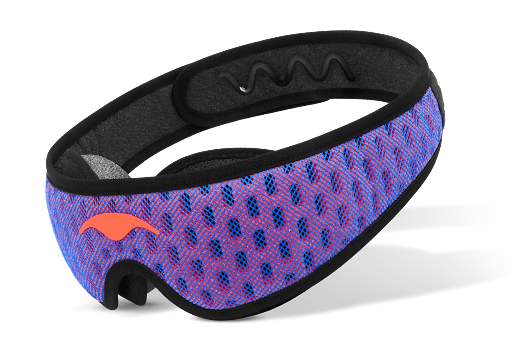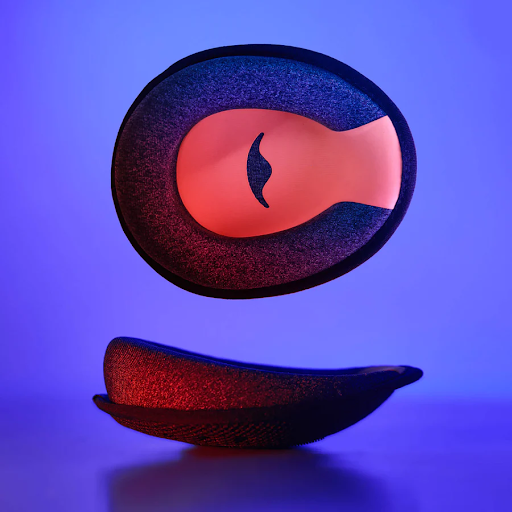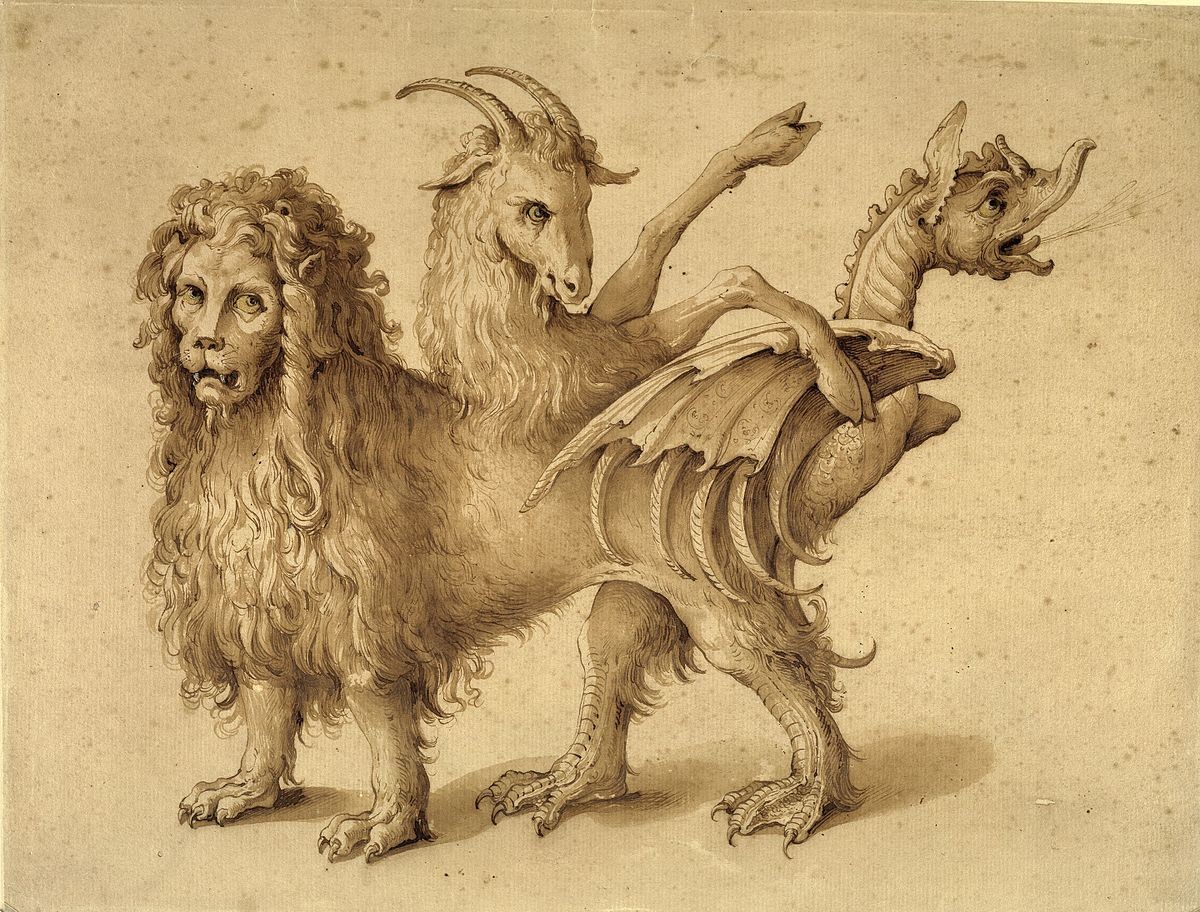Chimeras and Chameleons: How to Optimize Your Energy if You Have a Hybrid Chronotype Schedule
Jacopo Ligozzi, Una Quimera
Are the results of chronotype quizzes inconclusive?
Is temporary insomnia making it difficult to figure out your natural sleep schedule and peak energy times?
Do you have the late-evening vitality of a wolf, the foraging drive of the bear chronotype schedule, the personality of a lion and, for whatever reason, a dragon’s head for a tail?
If you answered yes to these questions, then your sleep chronotype (your body’s natural patterns of sleep/activity) may be a combination of beasts. Or you could be in a transitional period.
Or — and we don’t blame you one bit for this — you may just not be ready to embrace a dolphin chronotype schedule.
(And just in case you didn't know it, we have sleep doctor Michael Breus, Ph.D. to thank for the chronotypes concept wherein our sleep and wake cycles are similar to that of animals.)
Read onward for tips to help you determine your sleep type if you’re having problems nailing it down, as well as advice if you have a hybrid chronotype schedule or are in a transitional period.
Tip #1: Ask Your Dad About Your Sleep Type
Since your chronotype is determined by the length of your PER3 gene, there’s a good chance you share a chronotype with at least one parent.
Ask your parents some detailed questions about their daily schedules and energy levels to see what clicks with you. If your parents are in their sixties, note that they may be in the process of transitioning to a different chronotype (more on this later), so be sure to gather some historical data as well.
If you can’t quite relate, you may get your chronotype from a grandparent instead. (But that’s OK; even if you’re no further ahead in solving the mystery, your parents undoubtedly enjoyed your time together.)
And we have another trick up our sleeves anyway:
Tip #2: Hack Your Temperature
The key to your chronotype — or at least your dominant chronotype — might be in your medicine cabinet.
Part of your natural circadian rhythms includes cooling the body’s core temperature by a couple of degrees to prepare it for slumber. This will happen at a different time of evening, depending on your chronotype.
So grab your thermometer and, starting at 5:00 p.m., record your temperature each hour. (For the most accurate results, do so for a few evenings in a row.)
-
If your temperature starts to drop at around 7:00 p.m., you’re likely a lion.
-
If it falls at 9:00 p.m., you’re probably a bear.
-
If your core temperature drops at 10:00 p.m., you most likely have a wolf chronotype schedule.
Dolphins, we’re sorry to report that this trick doesn’t work for you — but you probably already know who you are, based on a lifetime of sketchy sleep patterns.
If the results are still inconclusive or don’t feel right, then you may be running on a hybrid chronotype schedule.
Hybrid Chronotypes: Early Bear, Late Bear, Dolphin Bear
Because bears represent such a large portion of the chronosphere (around 50%), bears on the fringe share traits and patterns with adjacent chronotypes.
For example, you may have the bear’s need for 8 hours of sleep and the drive to forage for snacks all day, but with the lion’s tendency to rise early to energetically challenge the day (i.e., you’re an “early bear”).
On the other hand, you might otherwise be bearish, but with the wolf’s traits of being a creative risk-taker who enjoys the nightlife (a “late bear”).
To complicate things further, early bears and late bears can also possess traits of the light-sleeping, high-strung, brainy dolphin chronotype.
So what’s a hybrid to do?
Check Yourself:
If you want to get your best sleep and be at your highest productivity, you’ll have to do some self-monitoring to determine where you fall on the hybrid spectrum.
The temperature test above can help you isolate which chronotype’s sleep patterns you favor, and certain smartwatches are equipped with sensors to determine your peak energy levels. (While the fancy gadgetry helps, you can instead just manually track your vitality throughout the day.)
Noting your specific periods of hunger can help, as well as what time you’re most inclined to take a nap. And since personality plays a role in determining chronotype, keep the following traits in mind as well:
Bear: Cautious, extroverted, friendly, open-minded, conflict-avoidant, prioritizing happiness, taking comfort in the familiar
Dolphin: Introverted, intelligent, detail-oriented, risk-avoidant, perfectionist
Lion: Conscientious, stable, practical, optimistic, strategy-oriented, overachieving, prioritizing health and fitness
Wolf: Impulsive, pessimistic, creative, moody, risk-taker, prioritizing pleasure, seeking novelty, reacting with emotional intensity
Plan your daily schedule around your dominant chronotype, but familiarize yourself with the details of your secondary chronotype. This will help you make tweaks and fine-tune your daily routine.
Above all, work with your body and feel your way through adjusting to the schedule that works best for your personal needs. Oh, and keep in mind…
Getting Older? A Change Is Coming
As we mentioned above, our chronotypes are genetically hard-coded and stay with us for most of our adult lives.
(By the way, your circadian rhythms and chronotype are two different things. But both regulate your sleep-wake cycle. However, your circadian rhythms can be altered by light exposure. For more information, read our blog post on circadian rhythm chronotype.)
However, there are age-related points at which your chronotype changes.
For example, much to their parents’ chagrin, almost every toddler is an early-rising lion. And when’s the last time you saw a teen who didn’t adhere to wolves’ sleep-until-noon schedule on the weekend?
As we near 21 years of age, we settle into our genetic chronotypes. Well, at least for a while.
Beyond middle age, most of us who don't already have a dolphin or lion chronotype schedule will transition to one or the other category. (After all, those early-bird specials aren’t gonna sell themselves.)
If you’ve reached a transitional period, try gradually shifting your daily schedule to the new chronotype whose traits you’re starting to inherit.
The change isn’t instantaneous — you’ve got plenty of time to grow accustomed to (and learn about) your new animal.
If you’re having a difficult time determining your chronotype, you may be trying too hard to pigeonhole yourself into a single category. Don’t forget that the hybrid chronotype schedule does exist — and requires its own special care.
What sleep mask is best for the hybrid chronotype schedule?

This is a tricky question, considering you’re a mix of different sleep chronotypes. But rather than read too hard and long into it, we’ll simplify things without compromise. We recommend the most advanced mask on the planet: Manta Sleep Mask PRO.

When you buy a sleep mask, you need it to do three things.
First, it needs to block out all light. Second, it needs to be comfortable no matter your sleep position. And third: it needs to be breathable and durable.
Manta PRO does all of these — and takes them to an entirely new level, especially for side sleepers. See for yourself.

Manta Sleep Mask PRO is 100% blackout. Its detachable C-shaped eye cups thin out near your temples for side-sleeping comfort. They each have a smart air bubble that expands as you switch sides, then compresses to prevent light from creeping in. They’re also incredibly comfortable and breathable.

The PRO’s head strap was engineered to give advanced breathability. It’s made up of 3 layers. The front is made of mesh and the second is perforated foam. The third is the interior of the mask, which is made of Tactel®. A material that’s softer, more durable and dries faster than most other fabrics.

A sleep mask doesn’t serve its purpose unless it stays on. The PRO’s infinitely adjustable head strap features an anti-slip gel, which helps it stay on all night. It won’t flatten your ears either, which can get pretty uncomfortable no matter what position you're in.
When we said it’s the most advanced sleep mask on the planet, we weren’t kidding. Make it part of your hybrid chronotype schedule, so you get the deep and restful sleep you deserve.
Finally, take our pop quiz and learn about the history of the different animal sleep types, and tips on getting the most out of your particular animal in our comprehensive article on chronotypes.
Sources:
-
Michael Breus, Ph. D., "The Power of When." Mindworks, Inc., 2016
-
Michael Breus, Ph. D., "Chronotypes." The Sleep Doctor, https://thesleepdoctor.com/how-sleep-works/chronotypes/. 8 Oct. 2019
Disclaimer: The information contained in this website or provided through our blog, e-mails, or programs is for informational purposes only. It is not intended to be a substitute for medical advice, diagnosis or treatment that can be provided by your healthcare professionals.













































